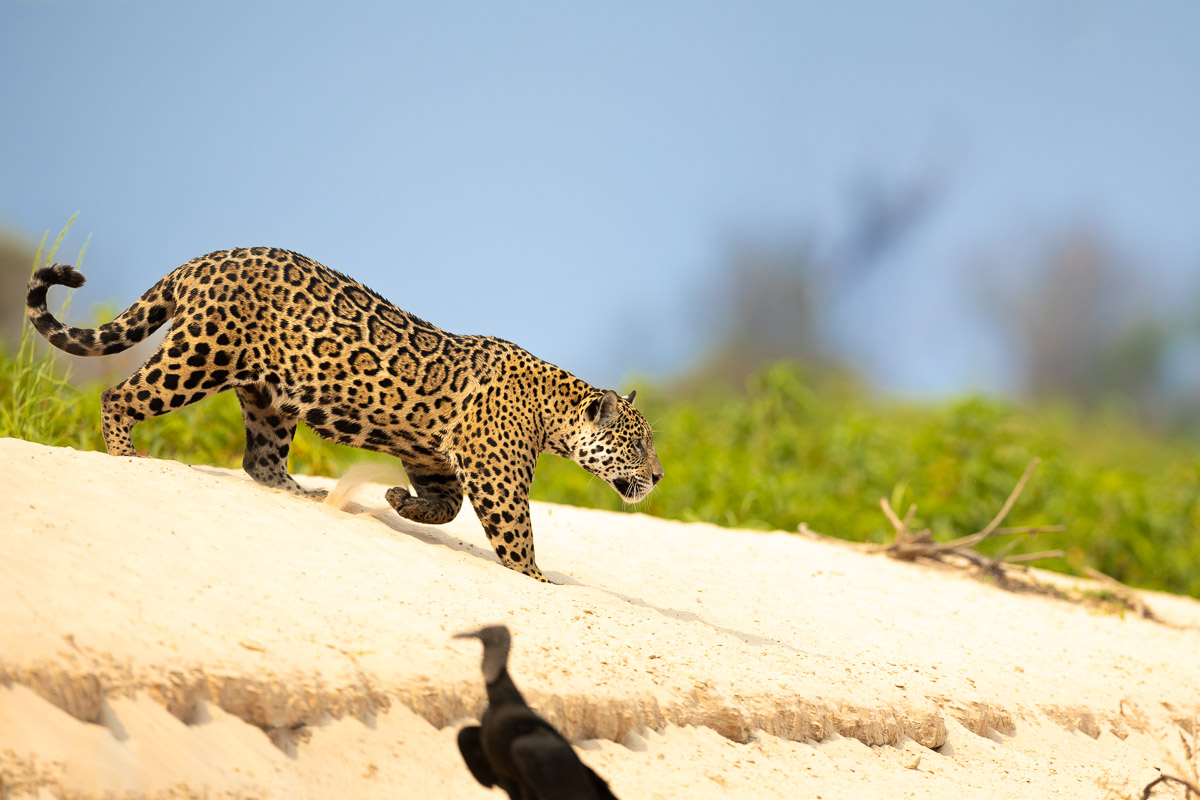Wildlife Of Brazil
US$7,950 / per person sharing
6th - 16th July 2025 - Sold Out
2nd - 12th August 2026 - 4 spaces remaining
21st - 31st August 2026 - House Boat- Sold Out
Regarded as one of the world’s top ten “mega-diversity” nations, our photography tour in Brazil takes you on an exciting journey through the expansive Pantanal, a stunning landscape filled with backwaters, lakes, rivers, gallery forests, and forested islands.
The Pantanal is the largest tropical wetland on Earth, showcasing some of the highest wildlife concentrations in South America. This region truly represents Brazil’s rich biodiversity. While a variety of birds and other wildlife present great opportunities for photographers, one animal stands out above the rest—the enchanting Jaguar. With four full days dedicated to boat excursions in search of these aquatic-adapted felines, we have an exceptional chance to observe and appreciate these magnificent predators up close.
Why should you choose this tour?
Unique Destination Appeal
Amongst all the fantastic species found here, this is the one place in the world where you are almost certain to come across a jaguar.Optimal Travel Month
Our Brazil Photo Tours are scheduled between June and August, the driest time of year when animals gather around the receding lakes and rivers.Abundance of Species
The Pantanal is teeming with a rich variety of wildlife and birds! Photographic opportunities feature species like the Giant River Otter, Hyacinth Macaw, Toco Toucan, Jabiru, Greater Rhea, Brazilian Tapir, Giant Anteater, Capybara, Seven-banded Armadillo, and Yacare Caiman.Intimate Group Departures
Journey to this exotic destination with fellow photography enthusiasts, sharing your passion and capturing bucket-list moments together.Expert-Led Experience
In-depth local knowledge of the region and its wildlife is essential to creating the perfect Brazil photography tour. Paired with the photographic expertise of your Panthera Photo Safaris Tour Leader, this adventure will ignite your passion for both photography and the destination.Quick Facts
2026 USD $8,750
2026 USD $10,500



Day 2: Cuiaba - Pousada Piuval
After breakfast we meat our Brazilian Guide at the hotel and then drive 100km to the city of Pocone. Pocone is the gateway to the Pantanal.
From Pocone we transition from a paved road onto the Transpantaneira highway which is a dirt road. For approx. 15km we continue on the dirt road while enjoying the wildlife and wetland on both sides of the road until we arrive at Pousada Piuval.
We’ll stay one night at a lodge, introducing you to many of the incredible species of the Pantanal. One of the highlights here, other than the incredible gardens, are the afternoon game drives. Here we have our first opportunity to search for the illusive Giant Ant-Eater.
Early morning we search once again for Giant Ant-Eaters and wildlife on a game drive.
After breakfast we take a road transfer from Piuval to Porto Jofre, at the end of the Transpantaneira Highway, where we will spend the next 7 nights searching for Jaguars.
After checking in, exploring the gardens and having Lunch, we’ll board on our first boat ride to go out and explore the Cuiaba River. This boat ride we will stay closer to the central area where 5 rivers meet. This is a great place to search for our first big cats, as well as take in the incredible diversity of the Pantanal. Other species we may see are giant river otters, tapirs, howler monkeys, capybara and caiman.
Jaguar is the main target here, and we’ll spend the full day cruising various rivers in a motorboat looking for this magnificent animal. We have radio contact with other boats, so if there is a jaguar seen we can head for the location.
Jaguars here are not very shy and will often stay in view for an extended period of time. We will not ignore other birds and wildlife during our search, but Jaguar is the priority. Some birds we may see include: Sungrebe, Pied Lapwing, Yellow-billed and Large-billed Terns, Black Skimmer, Greater Ani, Anhinga, Great Black Hawk, Gray-necked Wood-Rail, and more. Families of Giant Otters are fairly common, and it is not too unusual to see a Tapir.
Instead of returning to the lodge for lunch we bring a picnic style lunch with us. That way we do not lose time and can enjoy our lunch in the prime jaguar habitat and in some occasions enjoy a sighting by ourselves, no other boats.
We return around 5:30-6:00 pm at the lodge to refresh and relax before dinner.
Early breakfast and check-out. We embark on our comfortable transfer bus and drive back on the Transpantaneira highway towards the the Rio Claro. Along the way, we will have plenty of opportunities to stop and enjoy the wildlife we encounter.
We arrive at Rio Claro in time for lunch. In the afternoon, we can explore the small river for fishing birds, or by car once again to search for giant ant eaters..
At the Rio Claro, we have excellent opportunities to spot Giant Anteater, Southern Tamandua, Hyacinth Macaws, Blue-and-Yellow Macaws, Red-legged Seriema, and many more wildlife species.





























